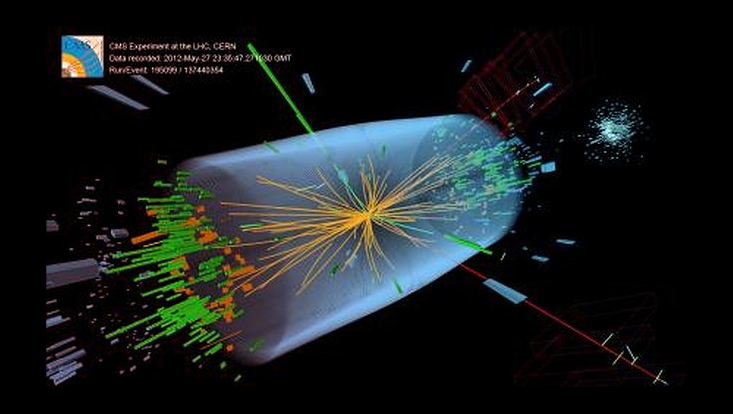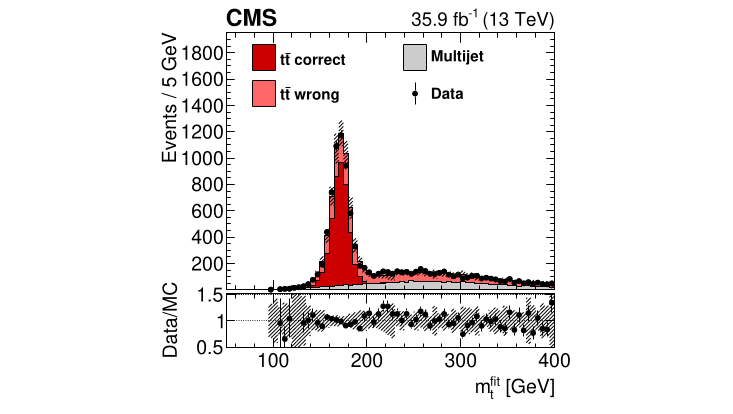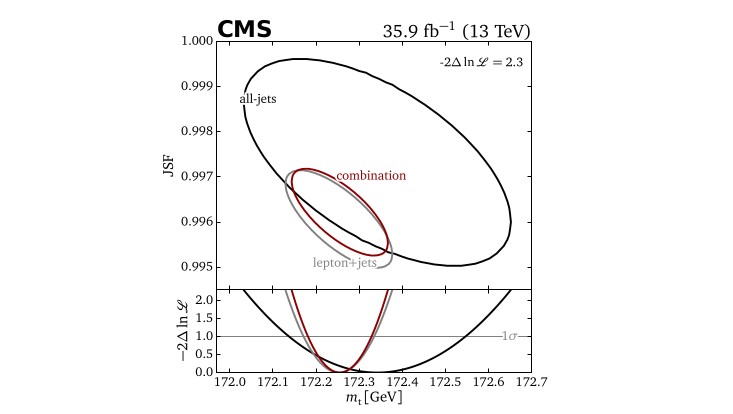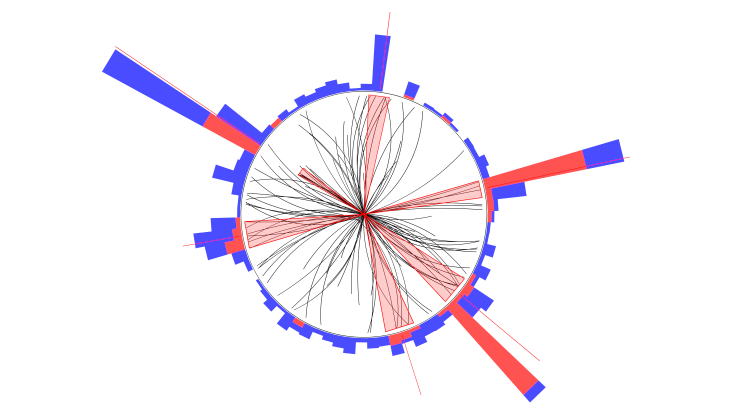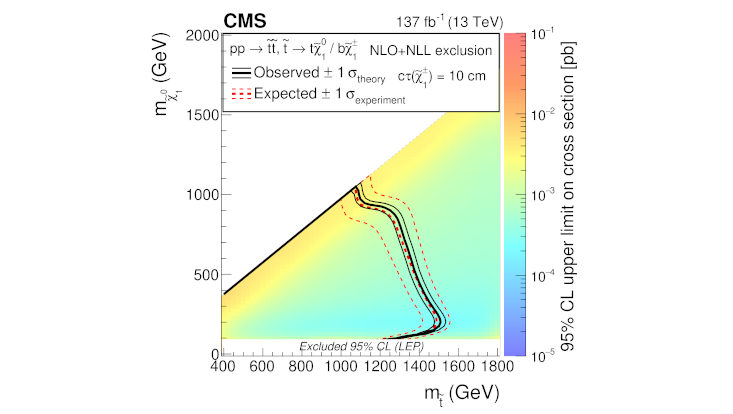Research
Our group is interested in particle physics at smallest possible distances and highest possible energies. Currently, our research is focussed on the Compact Muon Solenoid Experiment (CMS) at CERN's LHC.
We are working in particular on the development of silicon tracking detectors, experimental techniques such as detector calibration and kinematic event reconstruction as well as data analysis on top quark physics, higgs physics and searches for supersymmetry. In many of these areas we apply modern methods of machine learning.
Higgs Physics
The Standard Model of particle physics is the current summary of the laws of nature for all elementary particles. It is based on symmetries in the quantum world and, just as importantly, on a symmetry-breaking potential, that leads to the prediction of a so-called Higgs particle. In 2012, the CMS and ATLAS experiments at the LHC discovered such a particle, and measurements since then have shown as yet no discrepancy with the predictions of the Standard Model. However, one crucial step is still missing: A measurement of the potential itself, as it would manifest in a self-interaction of Higgs particles.
Our group is therefore analysing data from the CMS experiment at the LHC to find interactions with at least two Higgs particles. We are focusing on decays involving two tau leptons and two b-quark jets. Important for this are advanced machine learning algorithms to e.g. reconstruct the tau momenta.
Top Quark Physics
The top quark is the heaviest elementary particle in the Standard Model of particle physics. Its mass is about 180 times larger than that of a proton. The precise value of the top quark mass is of great importance for the overall consistency test of the entire Standard Model. It governs the energy dependence of the running Higgs boson mass and the stability of the electroweak vacuum as given by the Higgs potential. Despite its large mass, the LHC produces a large number of top quarks due to its high centre-of-mass energy and high-intensity proton beams. This makes it possible to study the properties of top quarks much more precisely than before.
We focus on measuring the mass of the top quark by directly reconstructing the top decay products in pair production events. We analyse both decays with leptons and events where only quark-jets signal the existence of top quarks. Again, machine learning algorithms and other statistical methods are used to e.g. optimally suppress the combinatorial background and to extract the top quark mass from the data.
Searches for Supersymmetry
Supersymmetry (SUSY) is an extension of the Standard Model (SM) that introduces a new fundamental symmetry between fermions and bosons. As a consequence, new particles (the SUSY partners of the SM particles) are predicted and can be searched for. Among other reasons, SUSY is motivated because it features a candidate particle for Dark Matter, it avoids unnaturally large radiative corrections to the Higgs boson mass, and it could provide a path to the unification of forces possibly even including gravity.
We have investigated natural SUSY models and their compatibility with the measured amount of dark matter and all other constraints from particle physics. In the mass regime accessible at the LHC, models with small mass differences between neutralinos and charginos are of particular interest. We are therefore looking for signatures of SUSY particles with long lifetimes, visible e.g. through secondary vertices and charged particles displaced from the main interaction vertex.

